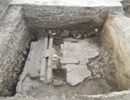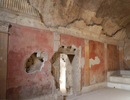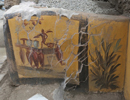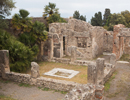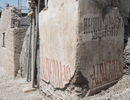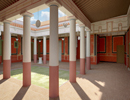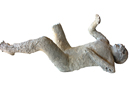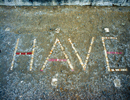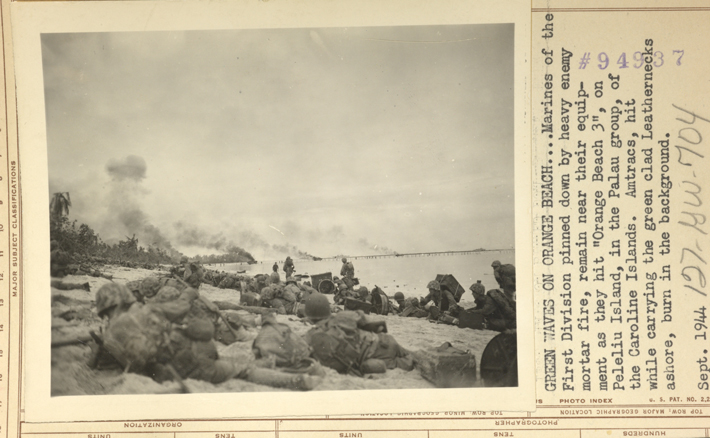Digging Deeper into Pompeii’s Past
New research is uncovering the ancient city’s dynamic story from its origins to the eruption that buried it
July/August 2019
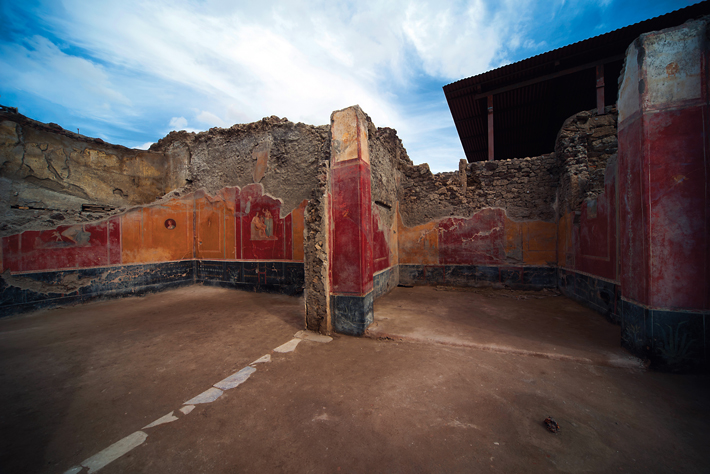 The emperor Nero is thought to have visited the southern Italian city of Pompeii in A.D. 64, perhaps spending a few nights in the enormous villa his wife, Poppaea, owned in the nearby town of Oplontis. Nero would have seen a city struggling to recover from a devastating earthquake two years earlier. “Pompeii was a city in crisis and flux,” says archaeologist Stephen Kay of the British School at Rome. The Pompeians labored to fix damaged roads, repaint walls whose frescoes had been ruined, rebuild their homes, revitalize the city’s infrastructure, repair its cemeteries, and construct what they were confident would be a new, earthquake-proof temple to their patron goddess, Venus.
The emperor Nero is thought to have visited the southern Italian city of Pompeii in A.D. 64, perhaps spending a few nights in the enormous villa his wife, Poppaea, owned in the nearby town of Oplontis. Nero would have seen a city struggling to recover from a devastating earthquake two years earlier. “Pompeii was a city in crisis and flux,” says archaeologist Stephen Kay of the British School at Rome. The Pompeians labored to fix damaged roads, repaint walls whose frescoes had been ruined, rebuild their homes, revitalize the city’s infrastructure, repair its cemeteries, and construct what they were confident would be a new, earthquake-proof temple to their patron goddess, Venus.
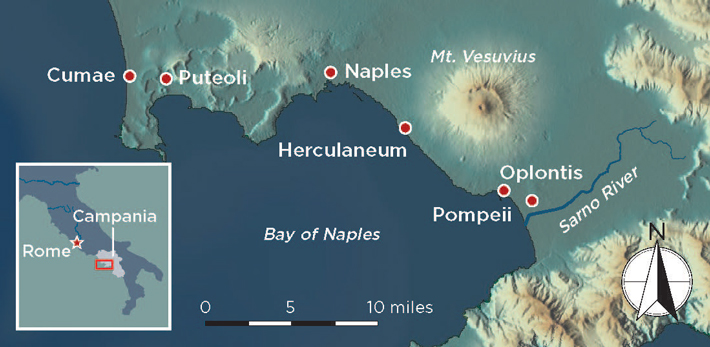 The Pompeians may not have known it, but the A.D. 62 earthquake had been a warning that the volcano looming over their city was waking up after 700 years of dormancy. In A.D. 79, Mount Vesuvius erupted in one of the largest and deadliest volcanic events in history. A dense, high-speed rush of solidified lava called lapilli, volcanic ash, and super-heated gases rushed down Vesuvius’ slopes and buried Pompeii and much of the rest of the region southeast of the mountain in as much as 20 feet of volcanic debris.
The Pompeians may not have known it, but the A.D. 62 earthquake had been a warning that the volcano looming over their city was waking up after 700 years of dormancy. In A.D. 79, Mount Vesuvius erupted in one of the largest and deadliest volcanic events in history. A dense, high-speed rush of solidified lava called lapilli, volcanic ash, and super-heated gases rushed down Vesuvius’ slopes and buried Pompeii and much of the rest of the region southeast of the mountain in as much as 20 feet of volcanic debris.
There is a tendency to think that Pompeii had always been just as it was in A.D. 79. However, by the first century A.D., it had already undergone as much as 1,000 years of change. “It’s difficult to say who the original Pompeians were,” says archaeologist Marcello Mogetta of the University of Missouri. “But if you dig below the A.D. 79 levels—which is a real challenge because you can’t destroy mosaic floors and knock down frescoed walls—you start to see that Pompeii is a site with a very long history.”

Also in this Issue:
Advertisement
IN THIS ISSUE
From the Trenches
You Say What You Eat
Off the Grid
Snake Snack
A Funeral Fit for Etruscans
History in the DNA
A Plot of Their Own
Picnic for the Afterlife
A Big Production
Putting Dinner on the Table
Medieval Baby Bootie
Cotton Mill, Prison, Main Street
Animal Archaeology
The Unseen Mummy Chamber
Neanderthal Fashion Statement
Spring Boards
World Roundup
Crusader genetics, Neanderthal cannibalism, Terracotta Army weapons, and Connecticut’s oldest English town
Artifact
Bronze Age costume jewelry
Advertisement

Recent Issues
-
 May/June 2024
May/June 2024
-
 March/April 2024
March/April 2024
-
 January/February 2024
January/February 2024
-
 November/December 2023
November/December 2023
-
 September/October 2023
September/October 2023
-
 July/August 2023
July/August 2023
-
 May/June 2023
May/June 2023
-
 March/April 2023
March/April 2023
-
 January/February 2023
January/February 2023
-
 November/December 2022
November/December 2022
-
 September/October 2022
September/October 2022
-
 July/August 2022
July/August 2022
-
 May/June 2022
May/June 2022
-
 March/April 2022
March/April 2022
-
 January/February 2022
January/February 2022
-
 November/December 2021
November/December 2021
-
 September/October 2021
September/October 2021
-
 July/August 2021
July/August 2021
-
 May/June 2021
May/June 2021
-
 March/April 2021
March/April 2021
-
 January/February 2021
January/February 2021
-
 November/December 2020
November/December 2020
-
 September/October 2020
September/October 2020
-
 July/August 2020
July/August 2020
-
 May/June 2020
May/June 2020
-
 March/April 2020
March/April 2020
-
 January/February 2020
January/February 2020
-
 November/December 2019
November/December 2019
-
 September/October 2019
September/October 2019
-
 July/August 2019
July/August 2019
-
 May/June 2019
May/June 2019
-
 March/April 2019
March/April 2019
-
 January/February 2019
January/February 2019
-
 November/December 2018
November/December 2018
-
 September/October 2018
September/October 2018
-
 July/August 2018
July/August 2018
-
 May/June 2018
May/June 2018
-
 March/April 2018
March/April 2018
-
 January/February 2018
January/February 2018
-
 November/December 2017
November/December 2017
-
 September/October 2017
September/October 2017
-
 July/August 2017
July/August 2017
-
 May/June 2017
May/June 2017
-
 March/April 2017
March/April 2017
-
 January/February 2017
January/February 2017
-
 November/December 2016
November/December 2016
-
 September/October 2016
September/October 2016
-
 July/August 2016
July/August 2016
-
 May/June 2016
May/June 2016
-
 March/April 2016
March/April 2016
-
 January/February 2016
January/February 2016
-
 November/December 2015
November/December 2015
-
 September/October 2015
September/October 2015
-
 July/August 2015
July/August 2015
-
 May/June 2015
May/June 2015
-
 March/April 2015
March/April 2015
-
 January/February 2015
January/February 2015
-
 November/December 2014
November/December 2014
-
 September/October 2014
September/October 2014
-
 July/August 2014
July/August 2014
-
 May/June 2014
May/June 2014
-
 March/April 2014
March/April 2014
-
 January/February 2014
January/February 2014
-
 November/December 2013
November/December 2013
-
 September/October 2013
September/October 2013
-
 July/August 2013
July/August 2013
-
 May/June 2013
May/June 2013
-
 March/April 2013
March/April 2013
-
 January/February 2013
January/February 2013
-
 November/December 2012
November/December 2012
-
 September/October 2012
September/October 2012
-
 July/August 2012
July/August 2012
-
 May/June 2012
May/June 2012
-
 March/April 2012
March/April 2012
-
 January/February 2012
January/February 2012
-
 November/December 2011
November/December 2011
-
 September/October 2011
September/October 2011
-
 July/August 2011
July/August 2011
-
 May/June 2011
May/June 2011
-
 March/April 2011
March/April 2011
-
 January/February 2011
January/February 2011
Advertisement




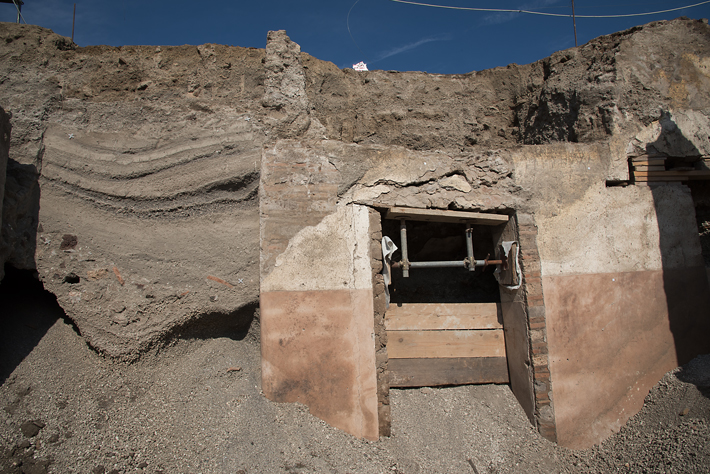 As early as the tenth century B.C., there may have been a small settlement on the site, occupied by descendants of Campania’s Neolithic inhabitants. In the eighth century, when colonists from Greece settled the region, and then in the seventh century with the arrival of the Etruscans from the area to the north between the Arno and Po Rivers, Pompeii grew larger. Before the A.D. 79 eruption, the site overlooked the Sarno River and was nearly a mile closer to the coastline. But the eruption drastically altered the landscape, cutting off access to the Sarno, an important waterway for transporting both people and the plentiful agricultural products cultivated in the area’s fertile volcanic soil, and to the busy harbor that served the city. In the sixth century B.C., a fortified wall that would define the city for the next 600 years was constructed, its shape determined by the lava flow on which Pompeii sits.
As early as the tenth century B.C., there may have been a small settlement on the site, occupied by descendants of Campania’s Neolithic inhabitants. In the eighth century, when colonists from Greece settled the region, and then in the seventh century with the arrival of the Etruscans from the area to the north between the Arno and Po Rivers, Pompeii grew larger. Before the A.D. 79 eruption, the site overlooked the Sarno River and was nearly a mile closer to the coastline. But the eruption drastically altered the landscape, cutting off access to the Sarno, an important waterway for transporting both people and the plentiful agricultural products cultivated in the area’s fertile volcanic soil, and to the busy harbor that served the city. In the sixth century B.C., a fortified wall that would define the city for the next 600 years was constructed, its shape determined by the lava flow on which Pompeii sits.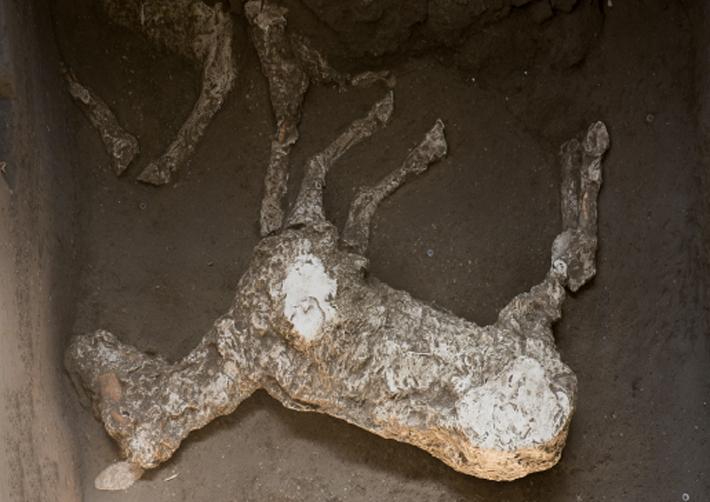 For more than two and a half centuries, with few interruptions, archaeologists have worked in Pompeii. Early on, these excavations were less scientific explorations than treasure-hunting expeditions aimed at collecting the paintings, sculptures, mosaics, jewelry, and silver that now fill many of the world’s museums. After decades of largely disorganized, poorly documented projects, Italian archaeologist Giuseppe Fiorelli became director of excavations at Pompeii in 1860. He meticulously documented and mapped the site, dividing it into the nine regions (Regio I–IX) that are still in use. Fiorelli also developed the technique of creating casts of people and animals trapped by the eruption by pouring plaster into the hollows left in the volcanic debris by decayed remains. Excavations have continued ever since, halted only by World War II—when Pompeii was bombed—and a powerful earthquake in 1980.
For more than two and a half centuries, with few interruptions, archaeologists have worked in Pompeii. Early on, these excavations were less scientific explorations than treasure-hunting expeditions aimed at collecting the paintings, sculptures, mosaics, jewelry, and silver that now fill many of the world’s museums. After decades of largely disorganized, poorly documented projects, Italian archaeologist Giuseppe Fiorelli became director of excavations at Pompeii in 1860. He meticulously documented and mapped the site, dividing it into the nine regions (Regio I–IX) that are still in use. Fiorelli also developed the technique of creating casts of people and animals trapped by the eruption by pouring plaster into the hollows left in the volcanic debris by decayed remains. Excavations have continued ever since, halted only by World War II—when Pompeii was bombed—and a powerful earthquake in 1980.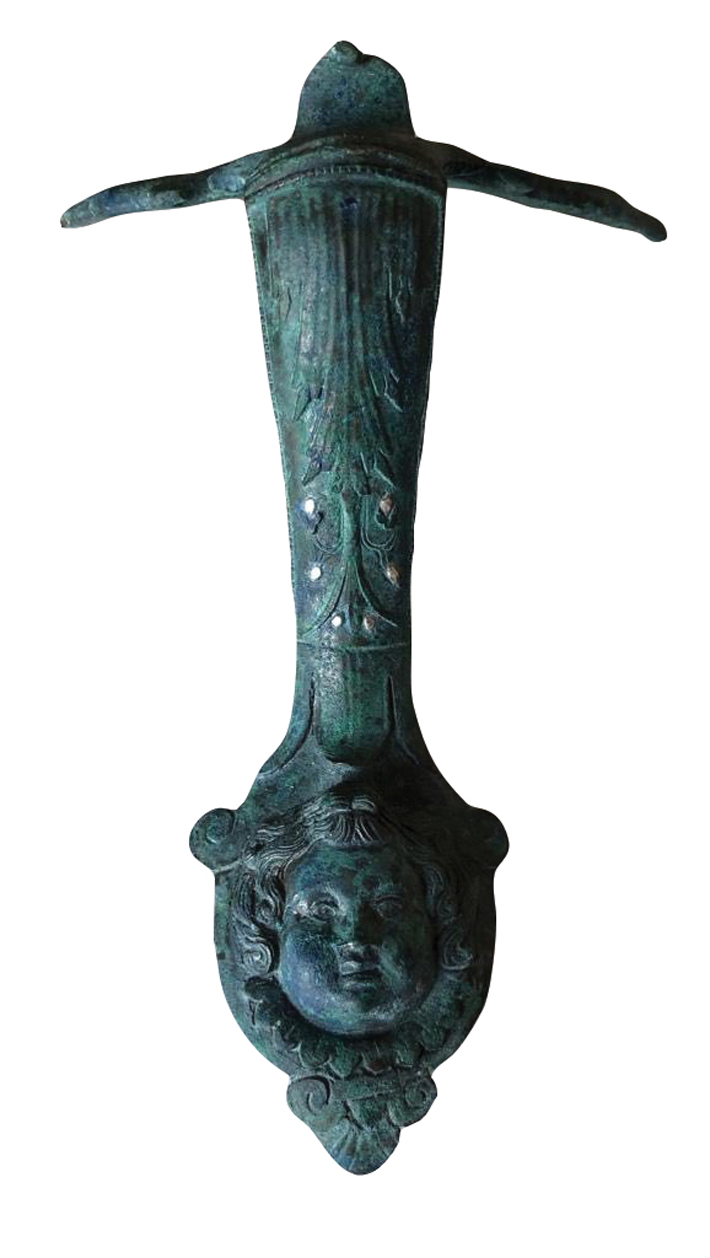 Despite this nearly constant collecting, surveying, mapping, and digging, as of 2018, about a third of Pompeii still had never been excavated. At this point, in Regio V, in the northern part of the city, the layers of lapilli, ash, and volcanic mud started to collapse under their own weight, imperiling excavated properties and adjacent streets. To address this, a new excavation project was begun in a previously unexplored part of Pompeii. “The conventional idea when these excavations started was that they would solve issues of damage control and conservation,” says archaeologist Steven Ellis of the University of Cincinnati. There was an expectation, he adds, that all the typical Pompeian things—wall paintings, shops, mosaics—would be found. “What they’re finding is, in some ways, much more interesting,” Ellis says. “It’s enabling us to see not just the state of the city in A.D. 79, but also what it was like when it first became an archaeological site 200 years ago. It’s a chance to see the Pompeii that the first excavators saw. We’ve never had that before.” This, he explains, is allowing archaeologists to ask questions about Pompeii that haven’t been possible for a very long time. “It’s more than just looking at how the colors of a painting have faded,” he says. “It’s ‘What were these paintings actually like when they were buried? Were amphoras really stacked against the walls the way we often see them now? Is this how the city really looked, or is what we see now a product of the past two centuries?’ If we see the site as an archaeological laboratory, Regio V is an entirely new kind of lab.”
Despite this nearly constant collecting, surveying, mapping, and digging, as of 2018, about a third of Pompeii still had never been excavated. At this point, in Regio V, in the northern part of the city, the layers of lapilli, ash, and volcanic mud started to collapse under their own weight, imperiling excavated properties and adjacent streets. To address this, a new excavation project was begun in a previously unexplored part of Pompeii. “The conventional idea when these excavations started was that they would solve issues of damage control and conservation,” says archaeologist Steven Ellis of the University of Cincinnati. There was an expectation, he adds, that all the typical Pompeian things—wall paintings, shops, mosaics—would be found. “What they’re finding is, in some ways, much more interesting,” Ellis says. “It’s enabling us to see not just the state of the city in A.D. 79, but also what it was like when it first became an archaeological site 200 years ago. It’s a chance to see the Pompeii that the first excavators saw. We’ve never had that before.” This, he explains, is allowing archaeologists to ask questions about Pompeii that haven’t been possible for a very long time. “It’s more than just looking at how the colors of a painting have faded,” he says. “It’s ‘What were these paintings actually like when they were buried? Were amphoras really stacked against the walls the way we often see them now? Is this how the city really looked, or is what we see now a product of the past two centuries?’ If we see the site as an archaeological laboratory, Regio V is an entirely new kind of lab.”